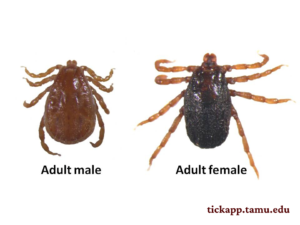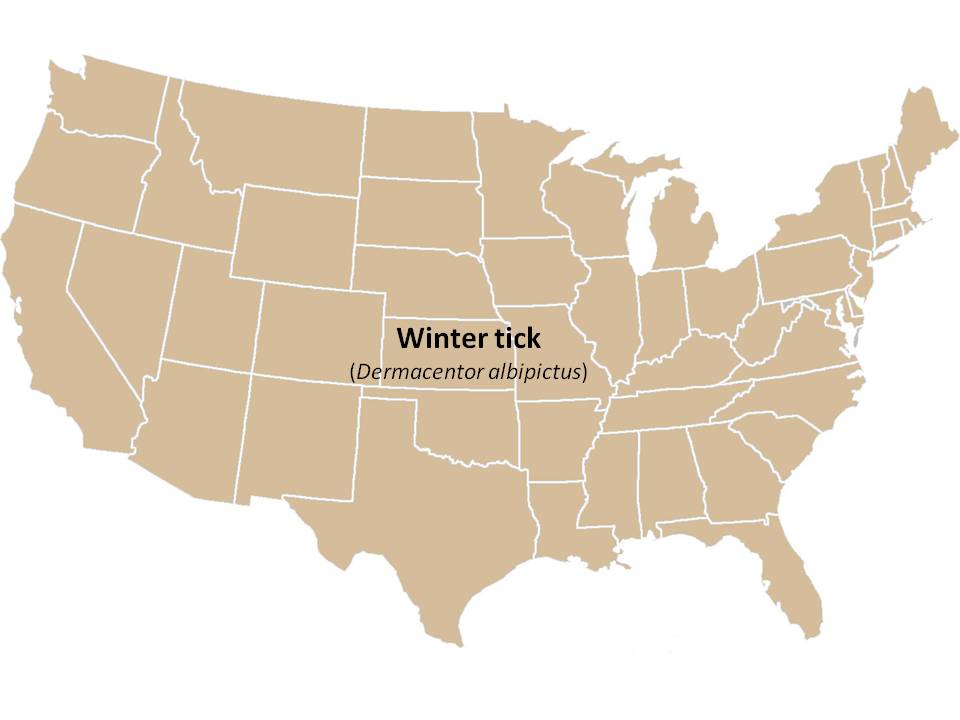
Species: Dermacentor albipictus (Packard)
Family: Ixodidae (Acari)
Description: Unfed larvae are sub-circular in shape, approximately 0.6 mm long and 0.55 mm wide. Unfed nymphs are noticeably long and narrow (1.3–1.7 x 0.79-0.85 mm) and remain rather long-bodied even after feeding. Bodies of adult males are teardrop shaped; the front half of male ticks is narrower than the broader shaped rear portion, typically measuring 1.8-4 mm in width front-back and 3.1-5.9 mm long. Bodies of unfed females are oval and elongated in shape, widest across the spiracles and narrowing gradually towards the scapulae. Coloration among males and females is typically brown with gray color patterning.

Distribution: Widely distributed across much of the contiguous US and Alaska. In North America, the winter tick ranges from Alaska through Canada, Mexico and Central America.
Hosts: Cattle, horses, mules, deer, elk, and moose are primary hosts, but infrequent collections from dogs, feral swine, and humans have been recorded. Heavy infestations of moose may cause extreme skin irritation and result in a condition known as “ghost moose”, where hair loss results from excessive rubbing. This host association has resulted in the common name “moose tick” in the north.
Biology: The winter tick is a one-host tick, completing a life cycle with larvae, nymphs, and adults feeding to engorgement on a single host animal. Larvae typically seeking hosts (a behavior known as questing) from Oct-Mar with activity peaking Dec-Jan. Winter parasitism places increased stress on ungulate hosts already burdened by diminishing forage quality and availability, and potentially experiencing parturition. Feeding ticks may be found attached to all body regions among heavily infested animals, with the axillaries, dewlap, escutcheon, and udder/scrotum regions most often infested. All stages may be found feeding on individual hosts at the same time and feeding is generally completed in 21-28 days. Hatching larval groups in spring remain inactive over summer (a process called aestivation at the soil-vegetation surface until autumn when diminishing photoperiod and temperatures combine to stimulate larval questing.
Associated Disease Pathogens: The winter tick vectors the bacterial pathogen Anaplasma marginale, causing the disease anaplasmosis in cattle.
Similar Tick Species: The tropical horse tick, Dermacentor (Anocentor) nitens is a one-host tick species similar in appearance, but its known range in the US is limited to southern parts of Texas and Florida.
